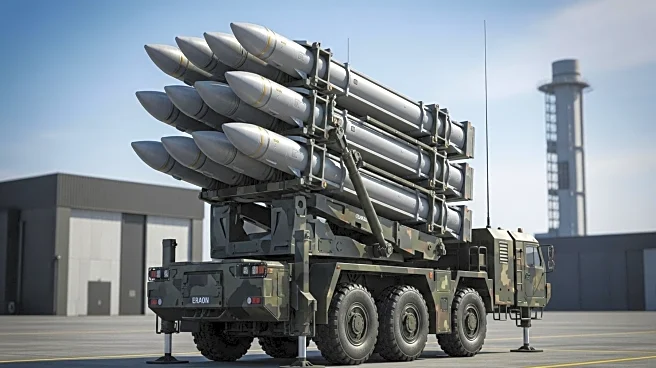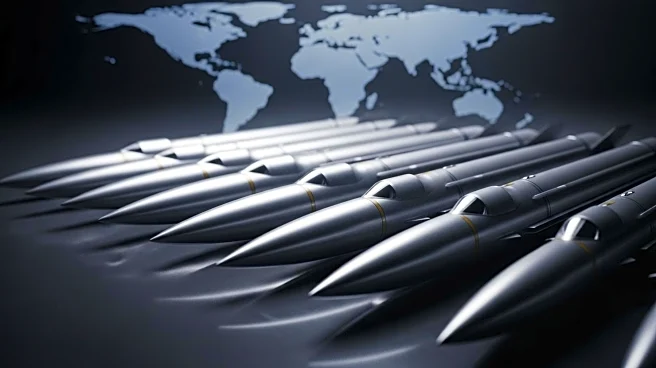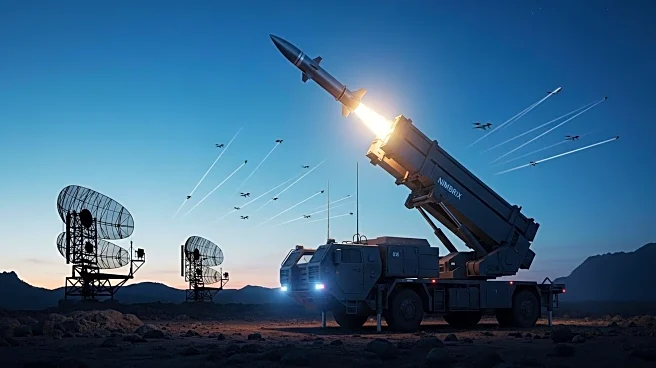What is the story about?
What's Happening?
The United States has approved a European-funded $850 million sale of 3,350 Extended-Range Attack Munition (ERAM) missiles to Ukraine. This decision aims to bolster Ukraine's defense capabilities against Russia by providing deeper strike capabilities. The ERAM missiles, developed for Ukraine's Air Force, are designed as low-cost, quick-to-produce air-launched missiles with a range of approximately 460 kilometers. They are equipped with a fragmentation warhead capable of destroying armored targets. The provision of these missiles is expected to enhance Ukraine's offensive capabilities, particularly against Russian oil infrastructure, which has been a key target in recent Ukrainian drone strikes.
Why It's Important?
The sale of ERAM missiles to Ukraine represents a significant shift in U.S. policy, potentially altering the dynamics of the Russia-Ukraine conflict. By enhancing Ukraine's long-range strike capabilities, the U.S. is enabling Ukraine to target critical Russian infrastructure, which could disrupt Russia's war efforts. This move may also influence the geopolitical landscape, as it signals increased U.S. support for Ukraine. The decision could lead to heightened tensions between the U.S. and Russia, as well as impact the strategic calculations of other NATO allies. The provision of these missiles underscores the ongoing international efforts to support Ukraine's sovereignty and defense.
What's Next?
Ukraine is expected to begin mass production of its domestically developed Flamingo cruise missile, which could further enhance its long-range strike capabilities. The ERAM missiles will likely be used against stationary military targets, such as ammunition depots and command posts. The U.S. may require Ukraine to seek permission for each use of the ERAM missiles on Russian territory, potentially limiting their operational flexibility. The development and deployment of these missiles could lead to increased military engagements and further escalation of the conflict.
Beyond the Headlines
The introduction of ERAM missiles raises ethical and legal questions regarding the use of long-range weapons in conflict zones. The potential for civilian casualties and collateral damage must be considered, as well as the implications for international law and norms governing warfare. The decision to provide these missiles may also influence future U.S. arms sales and military aid policies, setting a precedent for similar actions in other conflicts.
AI Generated Content
Do you find this article useful?















